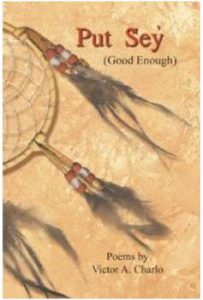 The Hawk is Hungry and Other Stories
The Hawk is Hungry and Other Stories
By: D’Arcy McNickle (Edited by Birgit Hans)
CSKT PS 3525 .A2844 H38 1992
D’Arcy McNickle was a big deal– and we’re not just talking on the Flathead Reservation. He was a key figure in national tribal movements from the 1930s to the 1970s, and worked both physically and intellectually on behalf of Native interests. He is well known for his novels The Surrounded and Wind from an Enemy Sky, and published several nonfiction works on white/tribal relations. He played a huge role in the formation of the National Congress of American Indians to unite Native peoples politically. He worked to inspire young people and his efforts became the National Indian Youth Council. He saw the preservation of cultural values as vitally important and was the founding director for the Center for the History of the American Indian at the Newberry Library in Chicago. In short, D’Arcy McNickle was an inspirational man with incredible energy!
The Hawk is Hungry and Other Stories is a collection of McNickle’s short fiction. Only six of the sixteen stories were published during McNickle’s lifetime. The rest of the stories were found in his private papers that he willed the Newberry Library after his death. The collection of stories is split into three distinct parts: Reservation stories, Montana stories, and City stories. Each has its own characters and conflict, but draw from McNickle’s own experiences living in these settings.
For people who have never read McNickle, the collection is a convenient gateway to his work! An entire novel can be intimidating, but most of us can find time to read a short story! For people who have read his other works, these stories extend the themes of identity, change, and struggle that weave through his novels and make his work so relatable.
It was difficult for me to pick my ‘favorite’ story in the collection. Each touches a unique aspect of the human experience and can’t be compared to another. McNickle doesn’t write what I would consider ‘happy’ stories, but instead records the raw and messy side of emotional existence. The two stories I found most moving (at this time in my life) were “Train Time” and “The Wedding Night” for the questions they posed about duty, purpose, and belonging.
What are your thoughts? If you read the stories, I hope you find time to visit the Library and chat with me about them!
-Lisa






